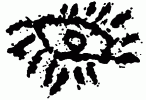| |
ENIGMATIC DISCOVERIES
Desert areas open to exploration are troves of unpredictable surprises. After passing through an area over and over again, each time researching and believing all the available information has been collected, new details still remain to be discovered: alignments, heaps of stones, geoglyphs, remains of hut floors, traces of camps may reveal unexpected hints each time they are revisited. After 20 years of fieldwork, new observations provide new findings of material culture. Sometimes such finds cannot be promptly deciphered. They raise questions which may remain open. In this chapter we shall present a few examples.
A group of four stone platforms built on top of a peak about three kilometres south of Har Karkom (site HK 301) prompts discussion. Well-preserved and still standing a meter above the soil, these monumental structures are finely built with unworked stones of intermediate dimensions. Similar platforms are known from the archaeological excavations at Megiddo, Arad, and other sites. At site HK 301, the largest of the platforms is ten meters in diameter, another is slightly smaller, and the smallest two are about eight meters in diameter. Two of these platforms are surrounded by circles of smaller stones. The few lithic findings related to this site are all from the BAC period dating back to the third millennium BC. Since some members of the expedition argued that they might be tombs, in 1998 one of these platforms was excavated down to the bedrock by a team co-ordinated by Valerio Manfredi. No burial or other remains were found. The filling was just made of stones. The platforms are flat on top and the stones appear to have been cemented by a powerful fire. Professor Noam Lahav, from the Seagram Center for Soil and Water Sciences in Jerusalem, determined that a heat intense enough to melt the stone in this manner could not have originated as an open-air fire of wood or animal excrement. It is not unlikely that the BAC peoples had access to a different fuel for combustion. Since bitumen, sulphur, and saltpetre are found naturally in the area or at short distances, one should not exclude the possibility that some Bronze Age shaman or medicine man knew the particular qualities of these materials.
Several hypotheses have developed on the possible function of the site of the "Burned Platforms," located on a peak which can be reached by a long, hard climb.
|



